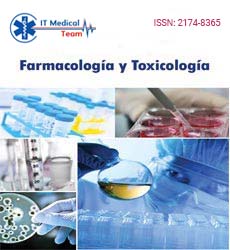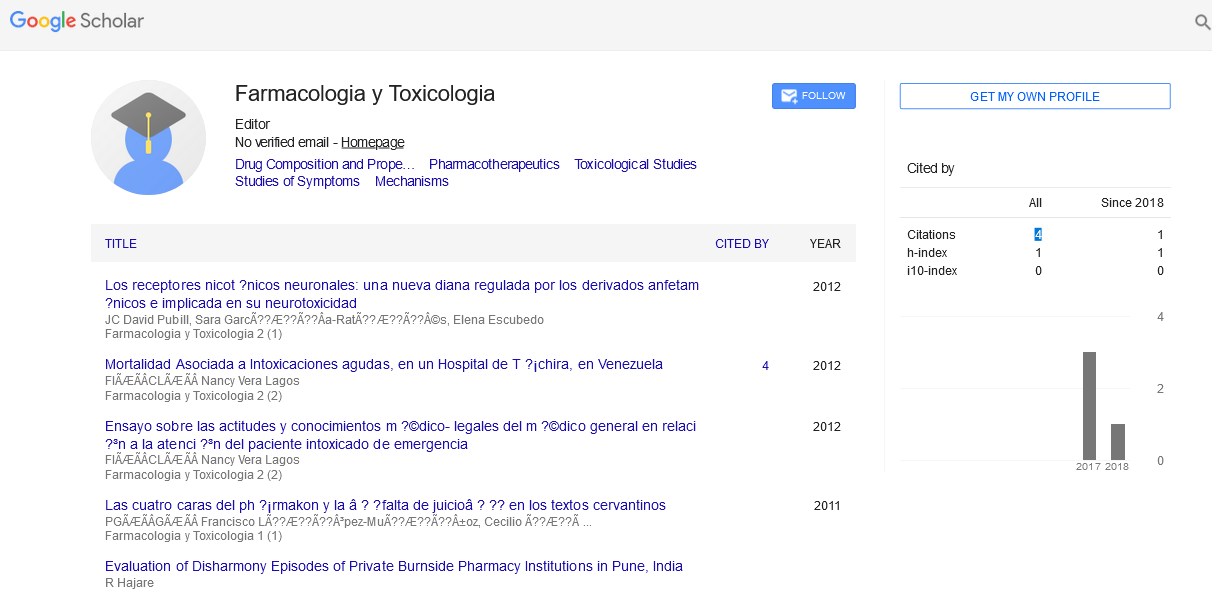Case Report - (2023) Volume 13, Issue 2
A Case Report on Danger of Improperly Approved Drugs
Ujvyid Tanyehi*
Department of Industrial and Systems Engineering, North Carolina State University, Raleigh, NC 27606, USA
*Correspondence:
Ujvyid Tanyehi, Department of Industrial and Systems Engineering, North Carolina State University, Raleigh, NC 27606,
USA,
Email:
Received: 03-Apr-2023, Manuscript No. ipft-23-13647;
Editor assigned: 05-Apr-2023, Pre QC No. P-13647;
Reviewed: 19-Apr-2023, QC No. Q-13647;
Revised: 22-Apr-2023, Manuscript No. R-13647;
Published:
28-Apr-2023
Abstract
The pharmaceutical industry plays a crucial role in providing safe and
effective drugs to treat and prevent various diseases. However, drugs
that are not properly composed and approved without quality control
measures can cause serious harm to patients, including health risks,
financial burdens, legal consequences, public health concerns, and loss
of trust. To prevent such cases, regulatory agencies can strengthen
regulations and increase transparency, healthcare providers can
improve communication with patients, research can be promoted, and
the public can be educated about the importance of quality control
measures. A collaborative effort is required to ensure that drugs are
safe and effective for patients.
Keywords
Pharmaceutical; Health Risks; Patients
Introduction
The pharmaceutical industry is a critical aspect of modern
healthcare, providing drugs that help treat and prevent
diseases. However, the process of developing and approving
drugs is complex and requires extensive testing, research,
and quality control measures [1]. Unfortunately, there have
been instances where drugs have been approved without
proper quality control measures, resulting in serious
harm to patients. In this article, we explore the damages
that can arise when drugs are not properly composed
and approved without quality checks. We will discuss the
health risks, financial burdens, legal consequences, public
health concerns, and loss of trust that can occur, and we
will provide suggestions for preventing such cases. It is
essential for drug companies and regulatory agencies to
prioritize quality control measures to ensure that drugs are
safe and effective for patients. The pharmaceutical industry
is responsible for providing safe and effective drugs that
help treat and prevent various diseases [2]. However, the
process of developing and approving drugs is a complex
and rigorous one, requiring extensive testing, research, and
quality control measures to ensure that the drugs are safe
and effective.
Discussion
Unfortunately, there have been cases where drugs have
been approved without proper quality control measures,
resulting in serious harm to patients [3]. If a drug is not
properly composed and then approved without quality
checks, it can cause a wide range of damages, including:
1. Health risks: Drugs that are not properly composed
and tested can have serious health risks. This can
include adverse side effects, drug interactions, and
even death. Patients may experience symptoms such as
headaches, nausea, vomiting, dizziness, seizures, and
other serious complications.
2. Financial burden: Patients who are harmed by a drug
that was not properly composed and approved may
face significant financial burdens. This can include
medical bills, lost wages, and other expenses related to
the treatment and recovery process.
3. Legal consequences: Drug companies that fail to
properly test and control the quality of their drugs
may face legal consequences. This can include lawsuits,
fines, and even criminal charges in some cases.
4. Public health concerns: When a drug is approved
without proper quality control measures, it can
become a public health concern. This can lead to
widespread outbreaks of disease and other serious
health problems.
5. Loss of trust: When a drug company fails to properly
test and control the quality of their drugs, it can lead
to a loss of trust in the pharmaceutical industry. This
can make it difficult for other drug companies to gain
the trust of patients and healthcare providers, leading
to a decline in the overall quality of care [4, 5].
To prevent drugs from being approved without proper
quality control measures, there are several steps that can
be taken:
1. Strengthen regulations: Regulatory agencies such as
the FDA can strengthen their regulations to ensure
that drugs are properly tested and that quality control
measures are in place. This can include more rigorous
testing requirements, more frequent inspections, and
increased penalties for companies that fail to comply
with regulations.
2. Increase transparency: Drug companies can increase
transparency by providing more information about
the development and testing of their drugs. This can
include publishing research studies, providing detailed
information about the manufacturing process, and
making information about adverse events public.
3. Improve communication: Healthcare providers
can improve communication with their patients by
discussing the risks and benefits of medications and
encouraging patients to report any adverse events or
side effects. This can help identify potential problems
early and prevent harm to patients.
4. Promote research: Funding research on the safety and
efficacy of drugs can help identify potential problems
before they become widespread. This can include
research on drug interactions, long-term effects, and
the safety of medications in specific populations such
as pregnant women or children.
5. Educate the public: Educating the public about
the importance of proper quality control measures
can help raise awareness and prevent harm. This can
include providing information about the regulatory
process, the risks and benefits of medications, and the
importance of reporting adverse events [6, 7].
To be more efficient in preventing drugs from being
approved without proper quality control measures, it is
essential to prioritize quality control measures throughout
the drug development and approval process. This can
include:
Investing in Research and Development: Drug companies
can invest in research and development to identify potential problems early on and ensure that drugs are safe and effective
for patients Conducting Rigorous Testing: Regulatory
agencies can require more rigorous testing to ensure that
drugs are safe and effective before they are approved for use
[8]. Increasing Transparency: Drug companies can increase
transparency by providing more information about the
development and testing of their drugs, including the
manufacturing process, research studies, and adverse
event reports Improving Communication: Healthcare
providers can improve communication with their patients
by discussing the risks and benefits of medications and
encouraging patients to report any adverse events or side
effects. Collaborating with Regulatory Agencies: Drug
companies and regulatory agencies can work together to
identify potential problems and ensure that quality control
measures are in place throughout the drug development
and approval process [9, 10].
By prioritizing quality control measures and collaborating
across the industry, we can be more efficient in preventing
drugs from being approved without proper quality control
measures and ensuring that drugs are safe and effective for
patients.
Conclusion
In conclusion, the approval of drugs without proper
quality control measures can have serious and far-reaching
consequences. Patients who are harmed by these drugs may
suffer from serious health risks, financial burdens, and legal
consequences, while the pharmaceutical industry may face
public health concerns and a loss of trust. It is essential
for drug companies and regulatory agencies to prioritize
quality control measures to ensure that drugs are safe and
effective for patients.
Preventing drugs from being approved without proper
quality control measures requires a collaborative effort from
regulatory agencies, drug companies, healthcare providers,
researchers, and the public. By strengthening regulations,
increasing transparency, improving communication,
promoting research, and educating the public, we can help
ensure that drugs are safe and effective for patients.
Acknowledgement
None
Conflict of Interest
No conflict of interest to declare about this work.
References
- Tomlin JL, Sturgeon C, Pead MJ, et al. Use of the bisphosphonate drug alendronate for palliative management of osteosarcoma in two dogs. Vet Rec.2000:147(2): 129-32.
Indexed at, Google Scholar, Crossref
- Psychas V, Loukopoulos P, Polizopoulou ZS, et al. Multilobular tumour of the caudal cranium causing severe cerebral and cerebellar compression in a dog. J Vet Sci. 2009; 10(5): 81-3.
Indexed at, Google Scholar, Crossref
- Loukopoulos P, Thornton JR, Robinson WF. Clinical and pathologic relevance of p53 index in canine osseous tumors. Veterinary Pathology.2003; 40(8): 237-48.
Indexed at, Google Scholar, Crossref
- Bech-Nielsen S, Haskins ME. Frequency of osteosarcoma among first-degree relatives of St Bernard dogs. J Natl Cancer Inst.2003;60(4): 349-53.
Indexed at, Google Scholar, Crossref
- Wilkins RM, Cullen JW, Odom L. Superior survival in treatment of primary nonmetastatic pediatric osteosarcoma of the extremity. Ann Surg Oncol.2003; 10(4): 498-507.
Indexed at, Google Scholar, Crossref
- Kundu ZS. Classification, imaging, biopsy and staging of osteosarcoma. Indian J Orthop.2014;48(2): 238-46.
Indexed at, Google Scholar, Crossref
- Papalas JA, Balmer NN, Wallace C. Ossifying dermatofibroma with osteoclast-like giant cells: report of a case and literature review. Am J Dermatopathol.2009; 31(5): 379-83.
Indexed at, Google Scholar, Crossref
- Gelberg KH, Fitzgerald EF, Hwang SA. Fluoride exposure and childhood osteosarcoma: a case-control study. Am J Public Health.1995; 85(2): 1678-83.
Indexed at, Google Scholar, Crossref
- Luetke A, Meyers PA, Lewis A. Osteosarcoma treatment where do we stand a state of the art review. Cancer Treat Rev. 2014; 40(5): 523-532.
Indexed at, Google Scholar, Crossref
- Dhaliwal J, Sumathi VP, Grimer RJ. Radiation-induced periosteal osteosarcoma (PDF). Grand Rounds.2009;10(1): 13-18.
Indexed at, Google Scholar, Crossref
Copyright: © Farmacologiay Toxicologia





